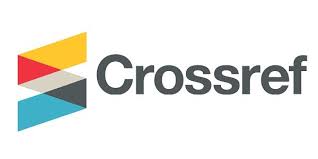IJCRR - 6(10), May, 2014
Pages: 08-15
HONEY PHONOPHORESIS VERSUS LOW INTENSITY LASER THERAPY IN FEMALE GENITAL HERPES
Author: Intsar Salim Waked, Abdel Hamid N. Deghidi, Randa Shalaan
Category: Healthcare
[Download PDF]
Abstract:
Objective: To compare the efficacy of honey phonophoresis versus low intensity laser therapy in female genital herpes simplex II. Research Methodology: Forty female patients suffering from genital herpes simplex type II assigned randomly into 2 groups; honey phonophoresis group (A) and low intensity laser group (B). Intensity of pain and serological response were recorded before and after 3 weeks of treatment. Results: The results of study showed that there were significant differences between both groups post-treatment as p value< 0.05. Percentage of improvement in VAS, IgG, IgM after intervention were 60%, 45%, 8%, respectively for group (A ) while for group (B) were 82%, 66%, 56%, Respectively. Conclusion: The study concluded that low intensity laser was more effective than Honey phonophoresis in the treatment of genital herpes type II.
Keywords: Low intensity laser, genital herpes, honey phonophoresis, serological response, polymerase chain reaction.
Citation:
Intsar Salim Waked, Abdel Hamid N. Deghidi, Randa Shalaan. HONEY PHONOPHORESIS VERSUS LOW INTENSITY LASER THERAPY IN FEMALE GENITAL HERPES International Journal of Current Research and Review. 6(10), May, 08-15
References:
REFERENCES
1. Lavoie SR, Kaplowitz LG. Management of genital herpes infection. Semin Dermatol. 1994 Dec;13(4):248-55.
2. S Faro; A review of famciclovir in the management of genital herpes; Infect Dis Obstet Gynecol. 1998; 6(1): 38–43.
3. Siegel MA. Diagnosis and management of recurrent herpes simplex infections. J Am Dental Assoc 2002; 133:1245-1249.
4. Fiddian AP, Yeo JM and Stubbings RF, (2006) :“Successful treatment of herpes simplex with topical acyclovir”. Br. Med. . (Clin. Res. Ed.), 286:1699-1701.
5. Armon TT, (2009): "the use of honey in the treatment of infected wounds". Trop. Doct; 10:91.
6. Sanya AO and Oluseye KA (2000): Relative transmissivity of local substitutes for the manufacturer's ultrasonic transmission medium. J Nig Soc Phys 2000; 10(2): 23-25.
7. Ohta, A, Abergel, RP, Uitto, J: Laser modulation of human immune system: inhibition of lymphocyte proliferation by a gallium-arsenide laser at low energy. Lasers Surg Med 1987 7:199–201.
8. Yu, W, Chi, L, Naim, JO, Lanzafame, RJ: Improvement of host response to sepsis by photobiomodulation.Lasers Surg Med 1997b 21:262–268.
9. Schindl, A, Schindl, M, Schindl, L: Successful phototherapy with low intensity laser irradiation of a chronic radiation ulcer in a patient with lupus erythematosus and diabetes mellitus. Br J Dermatol 1997a 137:840–841.
10. Haichenberger-Wildner, I, Michels, H: Laserstrahlen bei Herpeserkrankungen. Med Cosmetol 1981 11:142–144,
11. Landthaler, M, Haina, D, Waidelich, W: Behandlung von Zoster, postzosterischen Schmerzen und Herpes simplex recidivans in loco mit Laser-Licht. Fortschritte Med 1983 101:1039–1041.
12. Cork RC, Isaacc IG and El-Sharydah AR, (2004): “A comparison of the verbal rating scale and the visual analog scale for pain assessment”. The Internet Journal of Anaesthesiology, 8(1):227-236.
13. Pfister WR and Hsieh DS, (2007): Permeation enhancers compatible with transdermal drugdelivery systems. Part II. System design considerations. Pharm Tech: 14(10):54-60.
14. Deissl LP and Frenkel NS, (2006): “Herpes simplex virus amplicon: Cleavage of concatameric DNA is linked to packaging and involves amplification of the terminally reiterated a sequence”. J. Virol., 57:933.
15. Fatahzadeh MS and Schwartz RA, (2007): “Human herpes simplex. ”. Clinical and Experimental Dermatology, (32):625-630.
16. Al-Waili NS, (2004): Topical honey application vs. acyclovir for the treatment of recurrent herpes simplex lesions. Medical Science Monitor, 10(8), 94-98
17. Molan PC (1992) The antibacterial activity of honey. The nature of the antibacterial activity. Bee World 73: 5–28.
18. Booth S (2004) Are honey and sugar paste alternatives to topical antiseptics? Journal of Wound Care 13(1): 31–3.
19. Kwakman PH, te Velde AA, de Boer L et al (2010) How honey kills bacteria FASEB J 24(7): 2576–82 20. Tunér, J., Hode, L.: Low Level Laser Therapy - clinical practice and scientificbackground, 1999, ISBN 91-630- 7616-0.
21. Donnarumma G, De Gregorio V, Fusco A, Farina E, Baroni A, Esposito V, Contaldo M, Petruzzi M, Pannone G , Serpico R. Inhibition of HSV-1 replication of laser diodeirradiation: possible mechanism of action. Int J Immunopathol Pharmacol. 2010 OctDec;23(4);1167-76.
22. Sanchez PJM, Femenias JLC, Tejeda AD, Tuner J. The Effect of 670-nm Low Laser Therapy on Herpes Simplex Type 1. Photomedicine and Laser Surgery. ahead of print. 0.1089/pho.2011.3076. Online Ahead of Print: November 2, 2011.
23. Schindl A, Neuman R. Low-intensity laser therapy is an effective treatment for recurrent herpes simplex infection. Results from a randomized double-blind placebocontrolled study. J Invest Dermatol. 1999: 113 (2): 221- 223
24. Marotti J, Aranha AC, Eduardo Cde P, Ribeiro MS.Photodynamic therapy can be effective as a treatment for herpes simplex labialis. Photomed Laser Surg. 2009;27(2): 357-63.
25. De Carvalho RR, de Paula Eduardo F, Ramalho KM, Antunes JL, Bezinelli LM, de Magalhães MH, et al. Effect of laser phototherapy on recurring herpes labialis prevention: an in vivo study. Lasers Med ScI 2010;25(3):397-402
|






 This work is licensed under a Creative Commons Attribution-NonCommercial 4.0 International License
This work is licensed under a Creative Commons Attribution-NonCommercial 4.0 International License